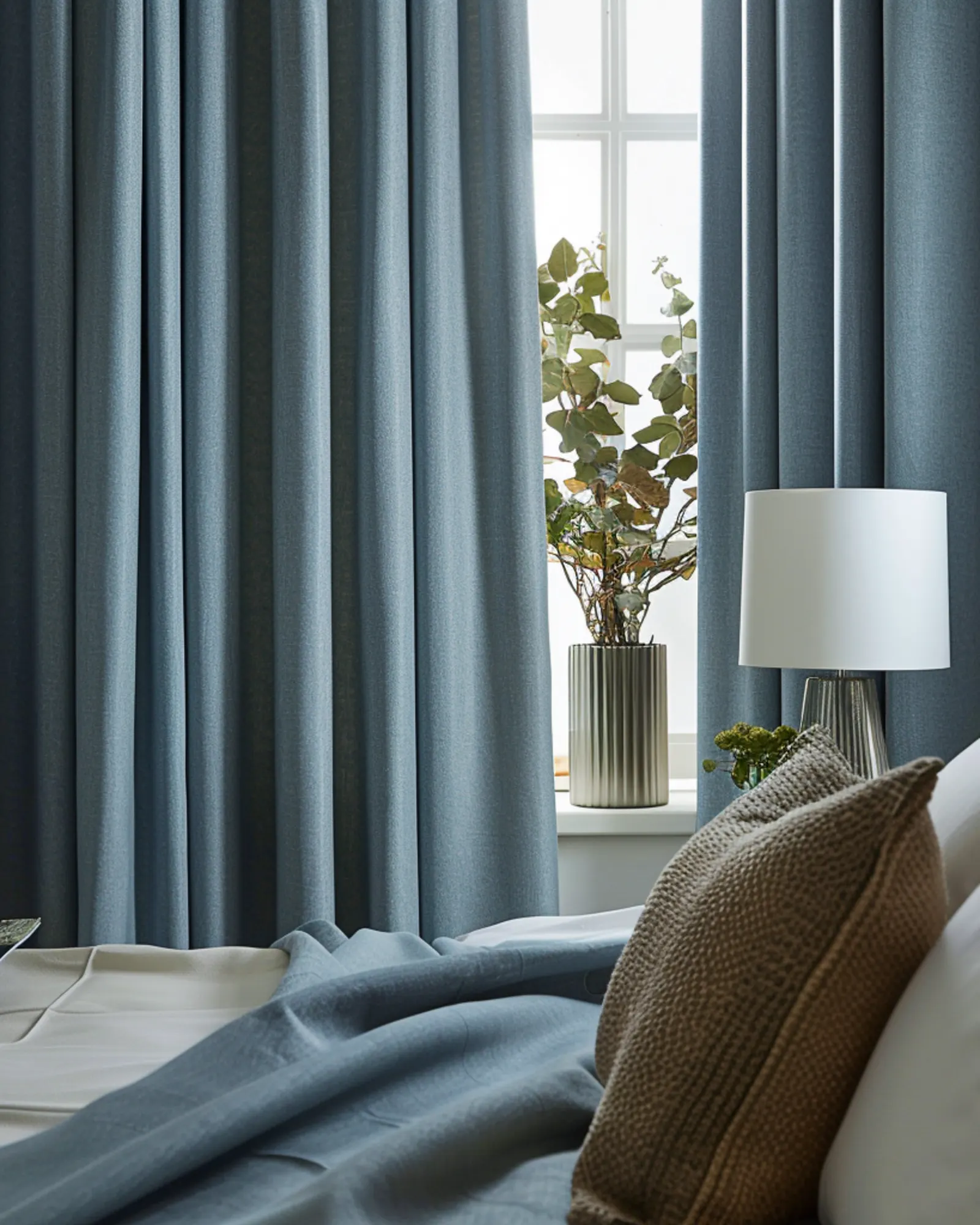Book our home measuring service in London
How Do I Make a Small Room Feel Larger?
Short of knocking down some walls, it’s impossible to make a small room physically larger but there’s plenty you can do to create the illusion of space. Here’s our tried and tested advice….
1. Get the layout right
All good design starts with ensuring a space functions effectively and nowhere is this more important than in a room where space is at a premium. Ensure that furniture is proportionate to the size of the room and that you don’t have to navigate around it to move in and about the space. Don’t overstuff a small room; be selective with your choice of furniture and only include items you’ll use daily.
It might sound counterintuitive but try to position furniture a small distance away from the walls or at a slight angle. This will create the impression that the space is larger than it actually is!

2. Create a focal point (that isn’t the TV)
This is an essential ingredient in every room. It’s what gives a room personality and catches the eye (thereby distracting from its size). A focal point doesn’t have to be a fireplace or architectural feature; it can just as effectively be a work of art, beautifully framed and perfectly lit or a group of stylish cushions combined with a colourful throw. Whatever you choose, ensure it can be seen as you enter the room.

3. Free up your floor
Avoid heavy, blocky pieces of furniture. Choose sofas and armchairs with low backs, exposed legs and open arms. Glass coffee tables and side tables will visually take up less space and allow light to filter around them. Avoid curtains that pool on the floor; choose those that skim instead or go for blinds.
This same rule applies to small bathrooms where wall mounted basins and WCs will keep the floor clear and maximize the sense of space. And if your kitchen is just large enough for an island, consider one on legs to prevent it feeling too cramped.
4. Be clever with colour
In small rooms, the temptation is to paint walls as light as possible and there’s no doubt that light colours recede while strong colours advance. But only do this in a room with plenty of natural light otherwise you’ll end up with a drab, uninspiring scheme.
Of more importance in a small space is to blur the boundaries so paint woodwork, walls and even ceilings in the same colour. If the ceiling is a step too far, choose a lighter shade of the wall colour; that way you’ll avoid a harsh jolt between ceiling and walls and the ceiling will appear higher. In a similar way, choose a blind or curtain fabric that tones rather than contrasts with the walls.


5. Let the light in
While we’re on the subject of curtains and blinds, a sheer fabric is a great way of maximizing light into a room. Check out our beautiful range here if you haven’t done so already. If you’ve decided on curtains, choose a style that uses less fabric and avoids curtains taking up much needed space. Our wave or eyelet headings are a great choice or a single curtain that pulls to one side will free up space on the other.
Continuing with the theme of light, maximise reflective surfaces to bounce it around. Gloss paint, polished plaster walls, mirrors and metallics will all work their magic. And at night, light up dark corners with wall, table or floor lamps to avoid the space feeling smaller than it is.
6. Play with scale
Professional designers manipulate scale to create drama and impact, and whilst furniture such as sofas and chairs need to be appropriately sized so a room doesn’t feel cramped, it’s a mistake to scale everything down in a small space. In a downstairs loo for example, source the largest mirror you can find to hang above the basin. In a tiny bedroom, go for a huge headboard that may well take up an entire wall. In a living room, hang a single large canvas on a small wall; much better than lots of small prints that will look cluttered. Similarly, with wallpaper and fabric, large scale patterns can look great in a small space - impactful, humorous and full of personality.
7. Ensure a sense of flow
We’ve talked before about the importance of flow in creating a calm, considered home. A decorative jolt as you move from one room to another will only emphasise a lack of space. In contrast, if one room leads naturally on from another, the sense of space will increase. This flow can be achieved in a number of ways.
As a first step, try to use the same flooring in a small room as those it leads off. Next use colours in adjoining rooms of the same intensity and underlying pigments or alternatively, use different tones of the same colour. If you opt for a darker tone in a hallway and a lighter tone in a small living room, the living room will automatically feel brighter and more spacious.
A final trick is to use consistent materials and accent colours throughout your home. So how about a bold rug in your hallway that is echoed in the colour of your living room curtains? This will make the living room feel like a natural extension of the hallway, creating harmony and a greater sense of space.